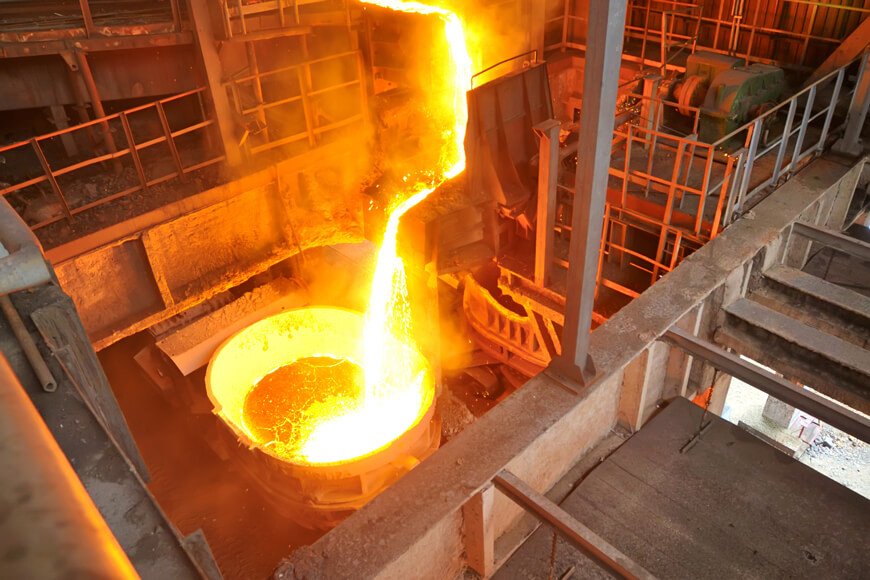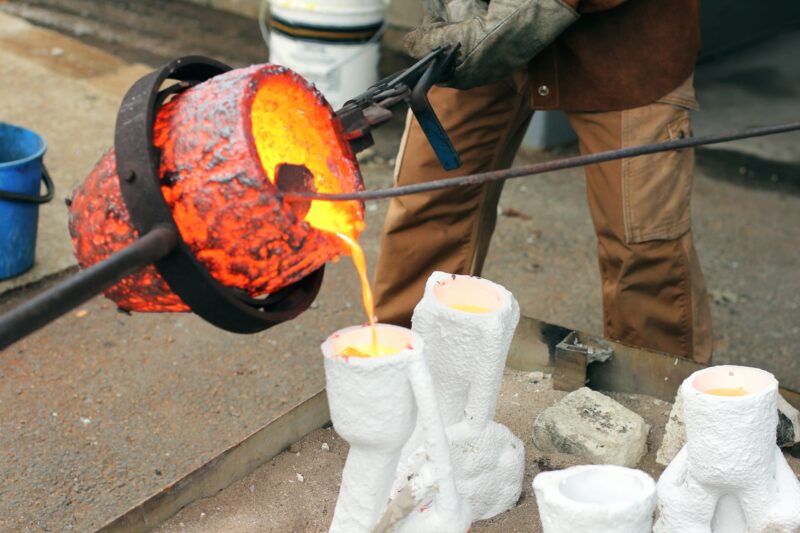For generations, metal casting has been a powerful tool for creating objects of beauty and utility. From jewelry to architecture, the art of metal casting has evolved over hundreds of years to produce masterpieces of craftsmanship.
Now, with the advent of liquid metal alchemy, humanity stands at the threshold of unlocking secrets that have eluded us until now. By utilizing this cutting-edge technology, we can explore new dimensions within the process and learn more about how metals can be shaped into works of incredible detail and complexity.
This article will discuss how liquid metal alchemy is revolutionizing the field and what it could mean for our future.
Exploring the Different Types of Metals Used in Casting

Metal casting is a process of forming metal objects that have been used for centuries. It involves pouring molten metal into a mold to create a desired shape or object.
The type of metal used in casting determines the strength and durability of the finished product, so it’s important to know what metals are available and how they can be best utilized. In this article, we will explore different types of metals commonly used in casting, from steel alloys to aluminum-silicon combinations and more.
Steel is one of the most popular choices for castings due to its high tensile strength and low cost but other metals such as bronze, brass, copper, magnesium, titanium, and nickel alloys also offer unique properties depending on their composition. Each type has advantages over another when considering factors like weight reduction or corrosion resistance which should be considered when choosing the right material for your application.
Aluminum-silicon combinations provide excellent ductility with improved wear resistance while beryllium copper provides superior electrical conductivity at elevated temperatures; each material offers unique benefits that need to be taken into account when deciding which one is best suited for your project. With so many options available it can often be difficult to choose just one but understanding the differences between them will help make this decision easier.
Techniques for Crafting Perfect Casts Every Time

Liquid metal alchemy is a revolutionary process that allows for the creation of perfect casts every time. From jewelry to artwork, it has become an invaluable tool for artists and craftsmen alike.
Here are some techniques used to ensure that each cast is crafted with precision:
- Careful Measurement: It’s essential that all measurements are exact when crafting a cast out of liquid metal. By taking precise measurements, you can guarantee that your casting will be uniform and accurate each time.
- Molds and Patterns: When creating molds or patterns from which the cast will be made, accuracy is key in achieving a perfectly-crafted product each time. Utilizing templates with intricate designs can help create masterpieces with ease!
- Cleanliness Matters: To avoid any unwanted blemishes on your finished product, make sure to keep your workspace clean throughout the entire process of creating your perfect cast using liquid metal alchemy!
- Perfect Temperature Control: Achieving optimal temperature control during the casting process helps ensure flawless results every single time! This means monitoring temperatures closely so they remain consistent as well as checking them regularly to prevent any issues from arising due to fluctuations in heat levels over long periods. With these techniques in mind, you’ll have no trouble mastering the art of liquid metal alchemy and unlocking its secrets for perfect casts every time!
Safety Guidelines When Working with Molten Metals
When working with molten metals, safety is of utmost importance. Taking the proper precautions can prevent devastating injuries or even fatalities.
Before handling any type of liquid metal, it is important to wear protective gear such as heat-resistant gloves and face shields. It’s also important to keep a fire extinguisher nearby in case of emergencies.
Additionally, it may be helpful to work in a well-ventilated area and ensure that all tools are properly insulated from the metal’s extreme temperature. Lastly, when pouring liquids into molds it’s important to use caution; pouring too quickly could cause splattering and dangerous burns.
Following these simple steps will help ensure everyone stays safe while exploring the wonders of liquid metal alchemy!
Conclusion

Metal casting is a complex process with many variables that can be difficult to understand and master. However, thanks to advances in AI technology, the potential of liquid metal alchemy has been unlocked and promises exciting new possibilities for this ancient art form.
Through the use of computer algorithms and data-driven insights, researchers are now able to explore ways to fine-tune processes and create higher-quality castings more efficiently. With these advancements in mind, it’s clear that liquid metal alchemy will continue to shape the future of metal casting for years to come.
For those interested in learning more about this fascinating field of research, there are many resources available online that can help you get started on your journey into the world of liquid metal alchemy.


